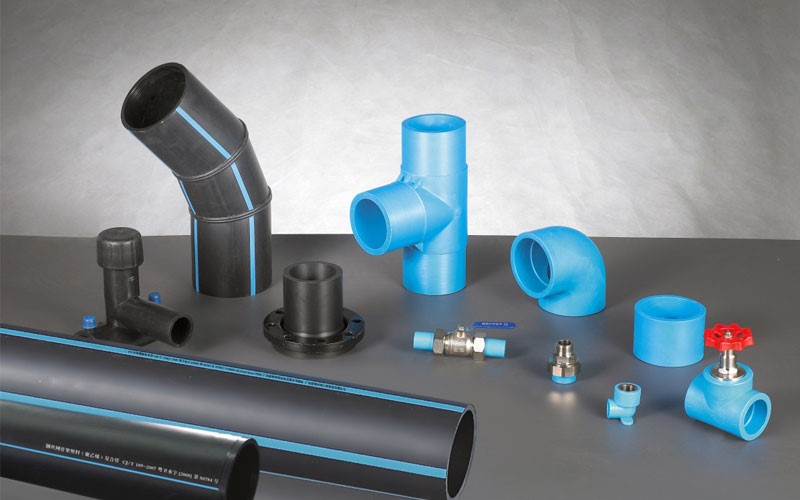Dec . 11, 2024 09:36 Back to list
High-Quality HDPE Sprinkler Pipe Fittings Manufacturing for Efficient Irrigation Solutions
The Significance of HDPE Sprinkler Pipe Fittings in Modern Irrigation Systems
In recent years, the demand for efficient irrigation systems has soared, driving innovation within the agricultural sector. One of the key components that have emerged is High-Density Polyethylene (HDPE) sprinkler pipe fittings. These fittings are vital for effective water distribution in both agricultural and landscaping applications, enhancing the overall efficiency of irrigation systems. This article delves into the features, advantages, and the manufacturing process of HDPE sprinkler pipe fittings, illustrating their importance in modern irrigation practices.
What is HDPE?
High-Density Polyethylene (HDPE) is a thermoplastic polymer known for its high strength-to-density ratio. It is widely used in various applications due to its durability, resistance to impact, and chemical stability. In the context of sprinkler irrigation, HDPE pipes and fittings are crucial for ensuring long-lasting and reliable water delivery systems.
Features of HDPE Sprinkler Pipe Fittings
HDPE sprinkler pipe fittings boast several features that make them ideal for irrigation purposes
1. Durability HDPE fittings are resistant to corrosion and can withstand harsh environmental conditions. They do not rust, break, or become brittle over time, ensuring longevity in the field.
2. Lightweight Compared to traditional materials like metal or concrete, HDPE is significantly lighter. This makes installation and maintenance easier, reducing labor costs and time during setup.
3. Flexibility The flexibility of HDPE fittings allows them to be installed in various configurations and landscapes, accommodating the unique design needs of various irrigation systems.
4. Chemical Resistance HDPE is resistant to a wide range of chemicals, making it suitable for both potable and non-potable water applications. This feature ensures that the fittings do not leach harmful substances into the water, maintaining its quality.
5. Low Friction Loss The smooth interior surface of HDPE fittings minimizes friction loss during water flow, enhancing the efficiency of the irrigation system.
6. Environmentally Friendly HDPE is fully recyclable. Using HDPE fittings reduces the environmental impact of irrigation systems, aligning with sustainable agricultural practices.
Advantages of Using HDPE Sprinkler Pipe Fittings
The incorporation of HDPE fittings in sprinkler systems offers numerous benefits
hdpe sprinkler pipe fittings factory

1. Cost-Effective While the initial investment in HDPE fittings may be higher than other materials, their durability and longevity lead to lower maintenance and replacement costs over time.
2. Efficiency in Water Delivery The low friction losses and effective design of HDPE fittings allow for uniform water distribution across the landscape, optimizing water usage and reducing waste.
3. Ease of Installation The lightweight nature and flexible design of HDPE fittings simplify the installation process. This is an essential factor for farmers and landscapers looking to implement irrigation systems quickly and efficiently.
4. Versatility Whether for a small garden or a large agricultural field, HDPE fittings can be adapted to various sizes and shapes, making them suitable for diverse applications.
Manufacturing Process of HDPE Sprinkler Pipe Fittings
The manufacturing process of HDPE fittings involves several stages
1. Material Preparation High-density polyethylene resin pellets are sourced and prepared for processing. The quality of the raw material directly impacts the performance of the fittings.
2. Extrusion The resin is melted and extruded into the desired shape, forming the fitting structures.
3. Cooling and Solidification The extruded fittings are cooled in a controlled manner to maintain their shape and strength.
4. Inspection and Quality Control Each fitting undergoes rigorous testing for quality assurance. Parameters like dimensional accuracy, pressure resistance, and surface finish are evaluated to ensure compliance with industry standards.
5. Packaging and Distribution Once passed through quality checks, the fittings are packaged and distributed to retailers and customers worldwide.
Conclusion
HDPE sprinkler pipe fittings play an indispensable role in the field of irrigation. With their combination of durability, flexibility, and cost-effectiveness, they have become a preferred choice for modern irrigation systems. As the world continues to face challenges related to water scarcity and agricultural efficiency, the significance of HDPE fittings will undoubtedly grow, paving the way for sustainable farming practices and effective water management strategies. As we move towards more efficient methods of irrigation, embracing advanced materials like HDPE will be crucial for meeting the demands of the future.
-
High-Quality PVC Borehole Pipes Durable & Versatile Pipe Solutions
NewsJul.08,2025
-
High-Quality PVC Perforated Pipes for Efficient Drainage Leading Manufacturers & Factories
NewsJul.08,2025
-
High-Quality PVC Borehole Pipes Durable Pipe Solutions by Leading Manufacturer
NewsJul.08,2025
-
High-Quality PVC Borehole Pipes Reliable PVC Pipe Manufacturer Solutions
NewsJul.07,2025
-
High-Quality UPVC Drain Pipes Durable HDPE & Drain Pipe Solutions
NewsJul.07,2025
-
High-Quality Conduit Pipes & HDPE Conduit Fittings Manufacturer Reliable Factory Supply
NewsJul.06,2025

